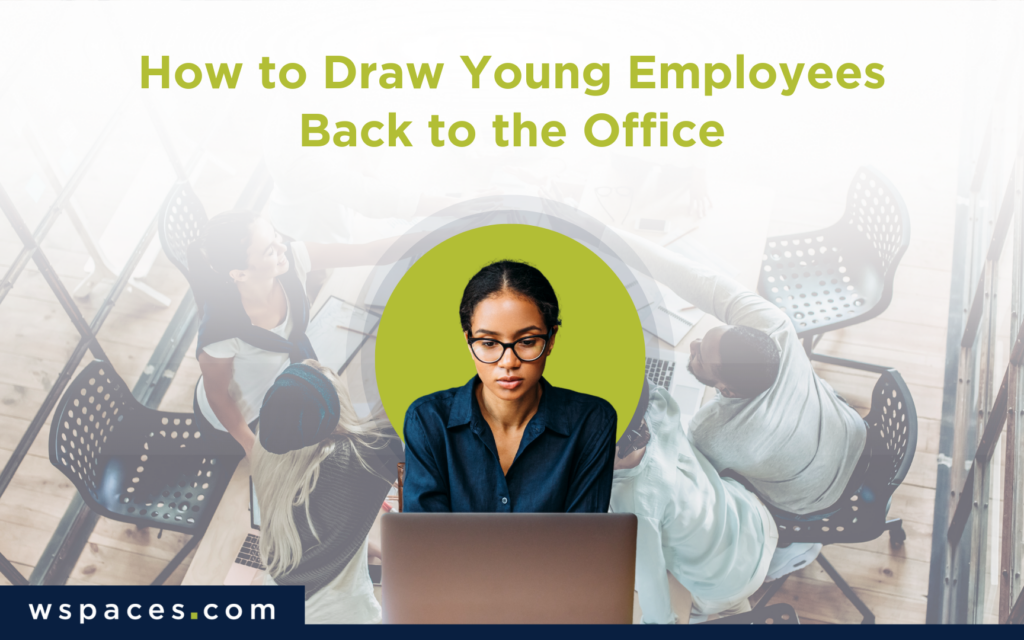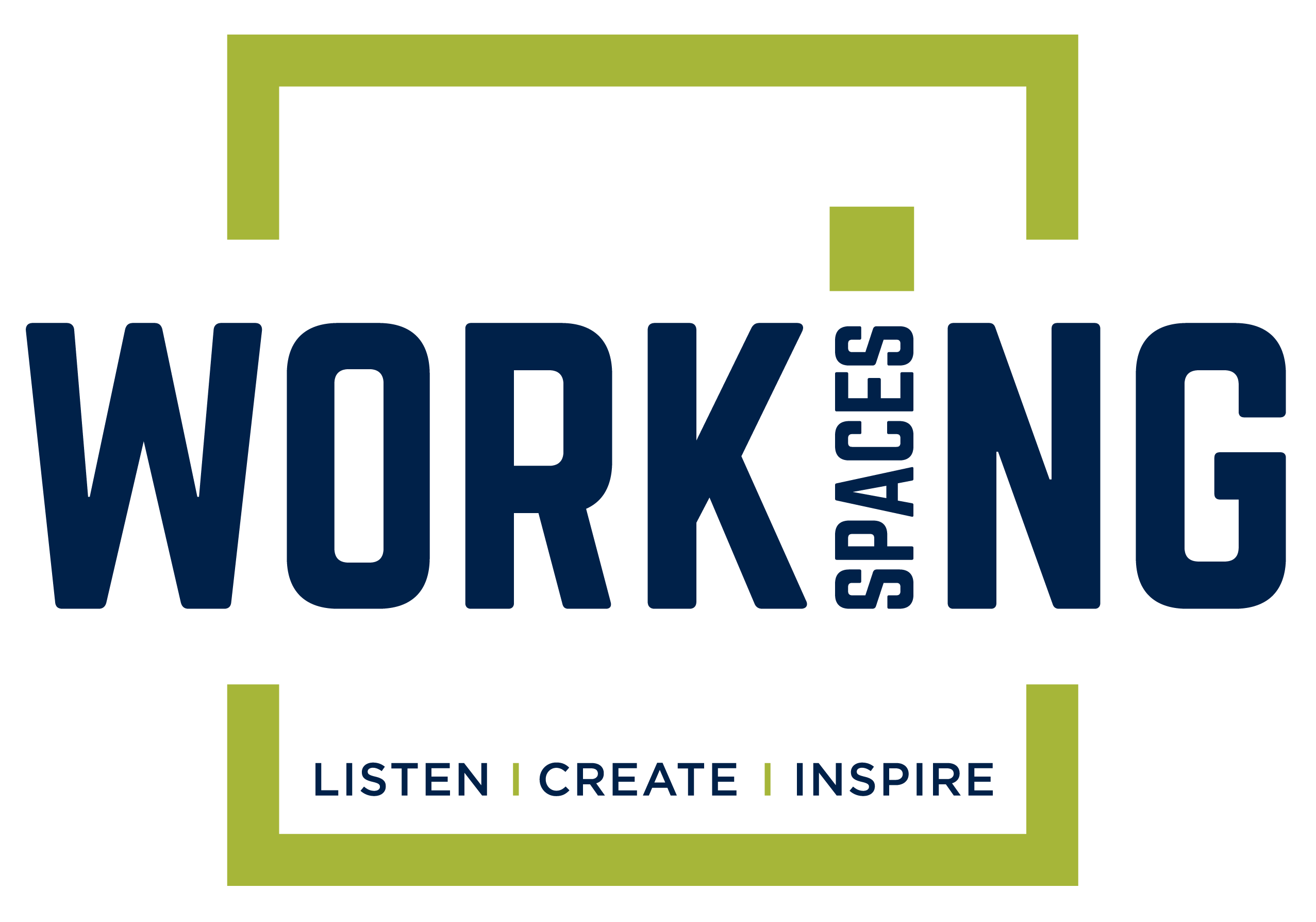
Post-pandemic, remote work has become the new norm in many industries and regions. Employees of all ages enjoy the convenience, comfort, and flexibility of working from home. Younger workers—those Gen Zers raised fully integrated with technology—question the need to return to an office full-time when they feel they can connect and work from anywhere.
So, how do you create an office space that makes these younger employees want to be in the office? The answer lies in creating a work environment that is not just functional but also aesthetically engaging—a space that rivals the comforts of home and feels safe, uplifting, and inspiring.
Bring the Comforts of Home to the Office
One of the main reasons young employees are hesitant to return to the office is the comfort they’ve found working from home. The office will never be like your own home, but offices can incorporate elements that mirror the casual coziness of home. These include:
Comfortable Seating
Swap out traditional office chairs for ergonomic options that prioritize comfort. Consider adding lounge areas with plush sofas, armchairs, and even bean bags for a more comfortable work setting.
Cozy Corners
Design “cozy corners” to feel like a living room, with warm lighting, soft rugs, and personal touches like bookshelves or artwork for a home-like atmosphere. These areas feel more relaxed and casual, helping to foster open conversations and collaboration between employees, which can lead to greater creativity and productivity.
Quiet Rooms
One of the perks of working remotely is getting your work done in the privacy and quiet of home. But these can be hard to come by in a busy, open office. Designate rooms specifically for relaxation, quiet breaks, or meditation. These can provide a much-needed escape during a busy day and contribute to greater employee wellbeing.
Embrace Nature With Plants and Natural Light
Millennials love their succulents, and Gen Z have also embraced “plant parenthood,” with many buying houseplants and taking up gardening during the pandemic. These young professionals have experienced firsthand the benefits that nature can bring to their mental health, productivity, and overall wellbeing.
Bring the benefits of nature into the office through:
Biophilic Design
Biophilic design principles focus on connecting people with nature in built environments (like an office building) by incorporating elements of nature into the design and construction of the space. This can include:
- Utilizing natural materials in the construction and furnishings
- Incorporating natural landscape features into the design
- Using an earthy color palette with greens and blues
- Following design shapes and forms that mimic the natural world, like circular furniture or asymmetrical lighting
Flora and Fauna
Bring nature into the office by installing water features (like a fountain or waterfall) and plants. This creates a calming environment that enhances focus and reduces stress, with plants also acting as natural indoor air purifiers. Depending on the size of the office, incorporate greenery with the strategic placement of potted plants, a green wall with plants growing vertically in a self-contained planter and irrigation system, or even a small indoor garden. Involving employees in the selection and care of an office garden can build a sense of community.
Natural Light
Incorporating natural light is a key feature of biophilic design and beneficial for your office plant life. It’s also beneficial to your employees. Natural light has been shown to boost mood and energy levels, making the office a more uplifting place to work. Position desks near windows and use glass partitions instead of solid walls to flood employee workspaces with natural light.
Design for Openness and Cleanliness
For the past generation of workers, staying home sick was unheard of, and for some, not an option. COVID-19 changed that mentality. In this post-pandemic world, the office has to feel safe and healthy for employees to want to be there. Gen Z, more than any generation before them, puts their physical and mental health first.
To make the office a place where these young employees feel comfortable, design a space that prioritizes physical health and safety through:
Open Layouts
An open layout allows for easy movement and physical distancing. Avoid cramped, crowded, or cluttered spaces by removing unnecessary partitions and opening up the floor plan to make the office feel more spacious and less confined. This sense of openness can be essential to maintaining a sense of safety for employees.
Ventilation and Air Quality
Air quality within office spaces was an issue before the pandemic. Post-pandemic, it’s a health concern for many employees, which is why you need to prioritize ventilation and air quality in the office design. Incorporating air purifiers, maintaining HVAC systems, and allowing for fresh air circulation can reassure employees that you’re listening to their concerns and making sure the office is a healthy place to work.
Clean and Minimalist Design
As soon as employees walk into the office, they should feel that they are in a clean, safe, and healthy environment. A minimalist design approach, with clean lines and uncluttered surfaces, can contribute to this feeling, providing a sense of order and cleanliness. Use design materials that are easy to clean, such as glass and metal, and keep shared spaces clutter-free for a hygienic atmosphere.
Create an Uplifting Environment
Aesthetics play a crucial role in how a space is perceived. Walking into an office that’s straight out of the 1980s can make younger employees feel that this is not a workplace (or company) for them. To make the office a place where Gen Z feels included and valued, the environment should be visually engaging, emotionally uplifting, and feel like it’s theirs. To accomplish this, try using:
Color Psychology
Use colors strategically to create a positive and inspiring atmosphere. Soft blues and greens can have a calming effect, while brighter colors like yellow and orange can boost creativity and energy.
Artwork
Including artwork that reflects the company culture can be a great way to define your brand visually, showing both current and prospective employees who you are as a company. Use art to add creativity to the workspaces of your employees based on the type of work they do. For example, think beyond decorative sculpture and wall hangings to consider video and digital art installations, which can serve as inspiration for design and marketing teams.
Personalization
From flexible work hours to flexible workspaces, Gen Z wants the ability to choose how they work. Give them a sense of ownership in the workplace by allowing employees to personalize their workspaces and include them in customizing shared work areas or designing the art that will be part of their space to make it feel like it’s “theirs.”
Create an Attractive Office Environment with Working Spaces
Drawing young employees back to the office willing requires a thoughtful redesign of the workspace—one that demonstrates to this next generation of workers that your company shares their values by creating a space rooted in sustainability, mindfulness, wellbeing, and community.
Contact us today to see how we can transform your office into a workspace your younger employees love—and can’t wait to work in!
